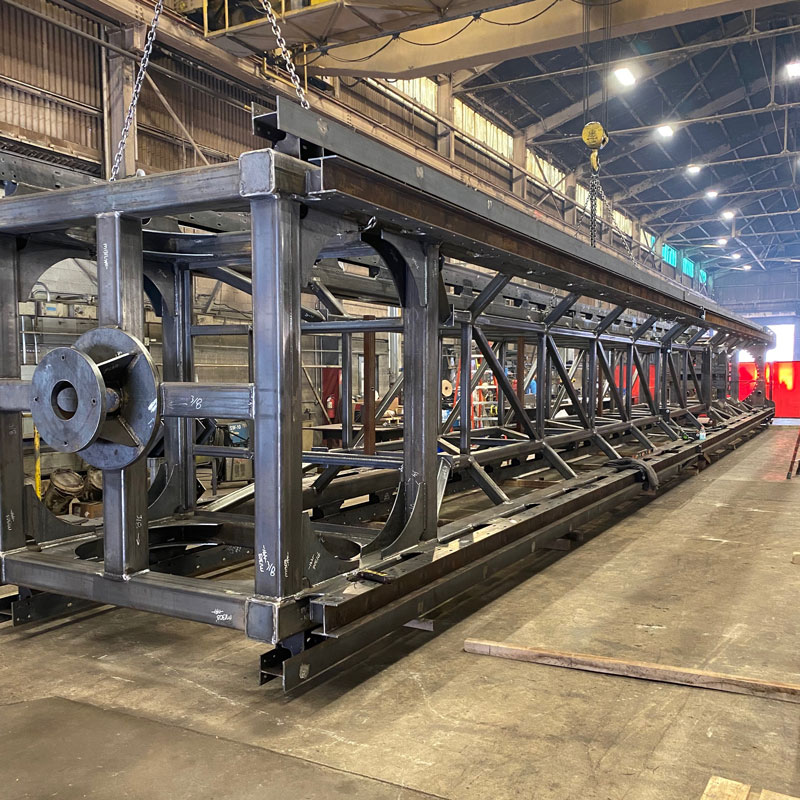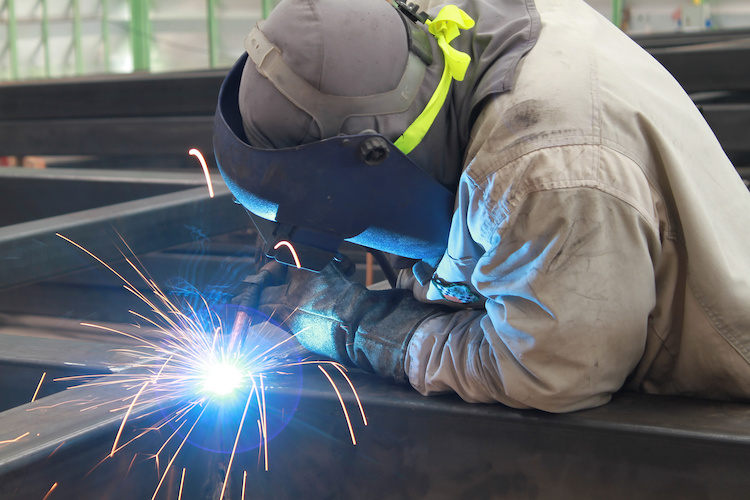Comprehensive Steel Fixing Providers for Construction Projects
Comprehensive Steel Fixing Providers for Construction Projects
Blog Article
Ingenious Patterns in Steel Construction: Enhancing Toughness and Precision
In the realm of steel manufacture, the pursuit of durability and accuracy has actually caused a wave of innovative patterns that are reshaping the market. From innovations in welding technologies to the combination of robotic automation in construction procedures, the landscape of steel production is evolving swiftly. High-strength alloy advancement, paired with the utilization of 3D modeling and simulation software program, is pressing the boundaries of what is achievable in regards to structural stability and precision. Moreover, the expanding emphasis on lasting practices in steel production is not only driving effectiveness however also fostering a much more ecologically conscious technique to manufacture. These trends are not simply shaping today yet likewise laying the foundation for the future of steel fabrication, promising further enhancements in longevity and accuracy.
Advanced Welding Technologies
In the realm of steel fabrication, the fostering of innovative welding technologies has considerably changed the industry's technique to achieving remarkable top quality and accuracy in structural welds. Advanced welding innovations, such as laser beam welding and friction stir welding, have arised as game-changers in the area. By leveraging these advanced welding strategies, steel producers can elevate the durability, toughness, and accuracy of their architectural welds, fulfilling the increasingly demanding needs of modern building tasks.
Robot Automation in Fabrication
Embracing robot automation has become a cornerstone of modern steel fabrication methods, boosting and improving procedures performance throughout the market. Robots are revolutionizing the way steel components are produced, using unparalleled precision and speed while decreasing human error. These automated systems can handle repeated tasks with regular accuracy, leading to higher quality end products.
One key benefit of robotic automation in steel construction is the ability to function all the time without fatigue, significantly boosting production result. This continuous procedure reduces downtime and speeds up job timelines, ultimately saving expenses for manufacturers. In addition, robots can be set to perform complex tasks that might be challenging or dangerous for human employees, improving safety in the work environment.
In addition, robotic automation makes it possible for seamless integration with other digital innovations, such as computer-aided layout (CAD) software program and Internet of Things (IoT) systems (steel fabricators melbourne). This interconnected strategy boosts interaction between various stages of fabrication, maximizing operations and making sure real-time tracking and control. As the steel fabrication sector continues to progress, robot automation stands apart as a transformative pressure driving effectiveness and precision in manufacturing procedures

High-Strength Alloy Advancement
The development of high-strength alloy development in steel fabrication is improving the sector's strategy to enhancing material resilience and efficiency. High-strength alloys are crafted to show superior mechanical properties, such as boosted tensile strength, durability, and deterioration resistance compared to typical steel qualities. By including these advanced alloys right into manufacture procedures, manufacturers can create parts that withstand greater tension degrees and severe atmospheres, causing more resilient and dependable final official statement product.
One trick benefit of high-strength alloy growth is the ability to lower product density without compromising structural honesty. This not only results in lighter-weight parts yet also adds to cost financial savings and boosted efficiency in manufacture and setting up procedures. Additionally, the improved strength-to-weight proportion of these alloys enables the design and building of frameworks with higher load-bearing capabilities while lessening general weight.
3D Modeling and Simulation Software Program
Advancements in steel construction procedures have actually been significantly pushed by the combination of sophisticated 3D modeling and simulation software application tools. These tools enable producers to create comprehensive virtual designs of their projects, allowing them to envision the final item with accuracy before any kind of physical work begins. By replicating numerous stress and anxiety aspects, environmental problems, and structural tons, producers can maximize styles for improved durability and performance. Additionally, 3D modeling and simulation software simplify the production procedure by recognizing prospective concerns early, decreasing the need for expensive rework and minimizing material waste.

Sustainable Practices in Steel Production
Incorporating lasting methods right into steel manufacturing processes is necessary about his for reducing ecological impact and making sure lasting resource schedule. One essential sustainable practice is the fostering of energy-efficient innovations to reduce greenhouse gas discharges throughout the steel production procedure. This consists of making use of eco-friendly power resources, such as solar or wind power, to power steel plants and implementing energy-efficient devices to maximize energy usage.
Another vital aspect of sustainable steel production is the responsible sourcing of raw products. This entails making certain that the iron ore and other resources utilized in steelmaking are acquired from ethical and eco-friendly sources. By advertising openness in the supply chain and adhering to rigorous environmental criteria, steel producers can reduce the negative effects of source extraction on regional ecological communities and communities.

Verdict
Finally, the ingenious trends in steel manufacture such as innovative welding innovations, robot automation, high-strength alloy growth, 3D modeling and simulation software application, and sustainable techniques are enhancing the sturdiness and accuracy of steel products. These advancements are transforming the steel manufacture market by improving sustainability, top quality, and performance. It is clear that the future of steel construction lies in welcoming these advanced technologies to fulfill the demands of modern building and construction and production sectors.
In the realm of steel construction, the quest of sturdiness and accuracy has actually led to a wave of innovative fads that are reshaping the market.In the content world of steel fabrication, the adoption of sophisticated welding modern technologies has substantially reinvented the sector's technique to achieving remarkable top quality and accuracy in structural welds. As the steel fabrication sector continues to progress, robot automation stands out as a transformative force driving efficiency and precision in manufacturing procedures.
Moreover, recycling and reusing steel scrap and waste materials play a considerable role in improving the sustainability of steel manufacturing. steel fixing.In verdict, the cutting-edge patterns in steel manufacture such as sophisticated welding modern technologies, robotic automation, high-strength alloy growth, 3D modeling and simulation software, and sustainable practices are improving the durability and accuracy of steel products
Report this page